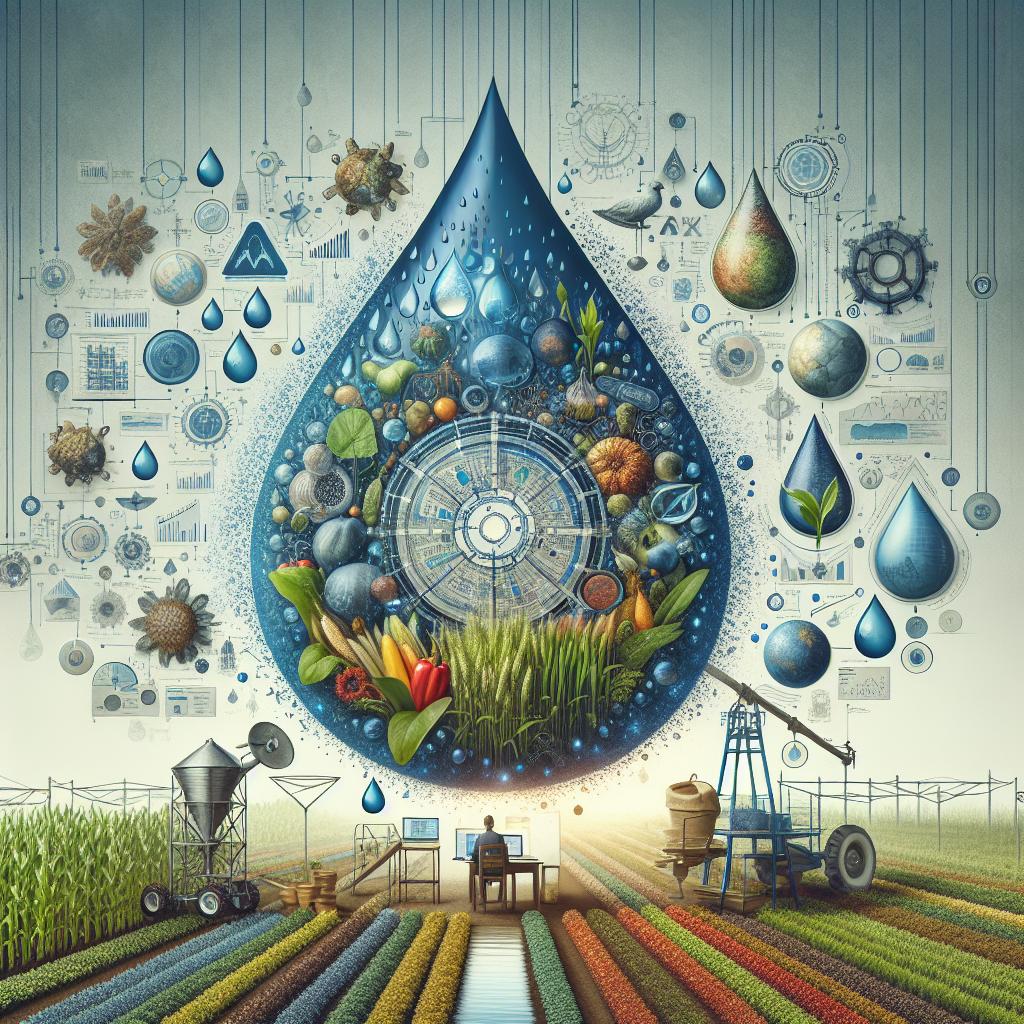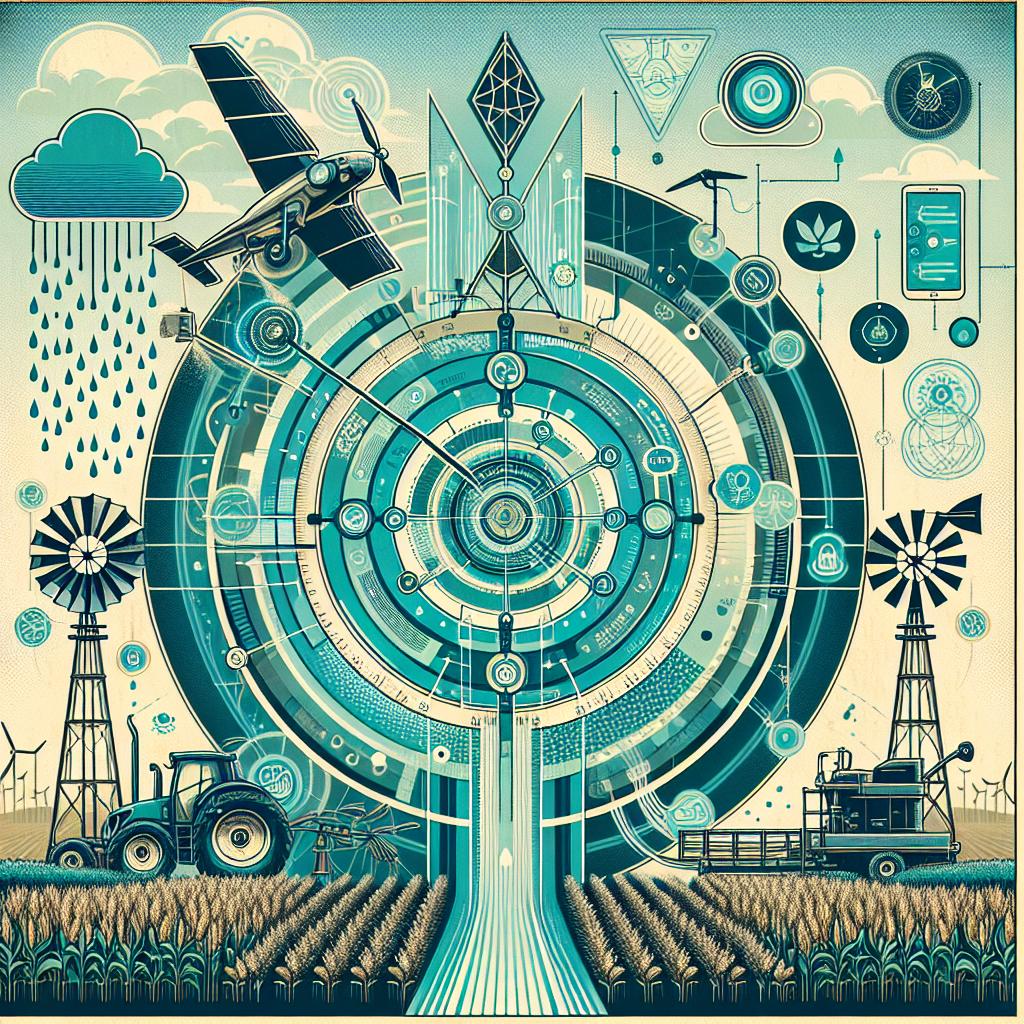This post may contain affiliate links which means I may receive a commission for purchases made through links. Learn more on my Private Policy page.
Unlocking Nature’s Harmony: Best Practices for Integrating Irrigation with Crop Rotation and Diversity
As the sun rises over sprawling fields, the dance of agriculture continues, a delicate balance of nature’s rhythms and human innovation. In today’s ever-evolving farming landscape, it’s more important than ever to cultivate a sustainable approach that not only nurtures our crops but also conserves our precious resources. Enter the powerful trio of irrigation, crop rotation, and biodiversity—a harmonious blend that has the potential to revolutionize traditional farming practices.
Imagine this: lush rows of diverse crops swaying gently in the breeze, each variety contributing to the health of the soil while capturing rainfall and irrigation in a symphony of efficiency. By weaving together the principles of effective irrigation with the time-tested knowledge of crop rotation and diversity, farmers can enhance productivity, improve soil health, and sustainably manage water resources.
In this article, we will explore the best practices for integrating irrigation with crop rotation and diversity, providing friendly guidance for farmers eager to embrace a holistic approach to agriculture. Whether you’re a seasoned pro or just starting your journey into the world of farming, these insights will help you cultivate resilience, boost yields, and ensure a vibrant future for our planet’s food systems. Let’s dig in!
Maximizing Water Efficiency through Strategic Crop Choices
Choosing the right crops plays a pivotal role in enhancing water efficiency, particularly when integrating irrigation with crop rotation and diversity. Leguminous plants, such as beans and peas, are excellent choices as they naturally enrich the soil with nitrogen while requiring less water compared to other crops. Meanwhile, deep-rooted varieties like sweet potatoes and carrots can tap into deeper soil moisture, reducing dependence on surface irrigation. By alternating shallow-rooted and deep-rooted crops in your rotation, you can maximize water uptake while minimizing evaporation losses.
In addition to crop selection, implementing a diverse planting strategy fosters resilience against pests and diseases, further promoting efficient water use. Considerations like intercropping can create a symbiotic relationship between plants, allowing them to exploit different soil layers and moisture levels simultaneously. The following table illustrates a simple rotation plan featuring crop types with their respective water requirements:
| Crop Type | Water Requirement (inches/week) | Benefits |
|---|---|---|
| Legumes | 0.5-1 | Soil enrichment |
| Root Vegetables | 1-2 | Efficient moisture use |
| Leafy Greens | 1-2 | Quick growth cycle |

Creating a Balanced Ecosystem: Benefits of Crop Diversity
Embracing a variety of crops not only enhances the visual appeal of farms but also plays a crucial role in improving soil health and boosting overall productivity. Different plants have unique root structures, nutrient requirements, and pest-resistance traits. By integrating a diverse set of crops, farmers can create a natural balance that mitigates the risk of soil depletion and reduces the likelihood of pest outbreaks. This symbiotic relationship ensures that the soil retains essential nutrients and even helps in controlling weeds naturally.
Moreover, growing a spectrum of crops can buffer against the unpredictable elements of climate change. The benefits of this strategy include:
- Increased resilience: Diverse crops are better equipped to withstand droughts, floods, and disease, reducing the financial risks for farmers.
- Enhanced biodiversity: A varied planting environment supports beneficial organisms like pollinators and predatory insects, fostering a healthier ecosystem.
- Improved water retention: Different root depths allow for more efficient use of water resources, reducing the need for excessive irrigation.
| Crop Type | Benefit |
|---|---|
| Legumes | Fix nitrogen in the soil |
| Root Vegetables | Improve soil structure |
| Grains | Provide ground cover |
| Cover Crops | Prevent erosion |

Timing is Everything: Synchronizing Irrigation with Crop Cycles
Effective irrigation is not just about ensuring plants receive water; it’s about doing so in harmony with their growth patterns. Synchronizing irrigation schedules with crop cycles can significantly enhance water efficiency and crop yields. Consider the following principles:
- Seasonal Awareness: Understand the specific water needs of each crop throughout its growth stages. For example, leafy greens may require more moisture during their initial growth, while root vegetables often need less during establishment.
- Soil Moisture Monitoring: Utilize technologies such as soil sensors to gauge moisture levels and adjust irrigation accordingly. This minimizes water waste and prevents over-irrigation, which can lead to root rot.
In addition to monitoring crop needs, it’s important to align irrigation practices with environmental conditions. External factors such as rainfall, wind, and humidity can drastically affect how much water your crops actually use. Keeping this in mind, farmers can benefit from adopting a flexible irrigation schedule. To illustrate the correlation between crop growth stages and water requirements, consider the table below:
| Crop Stage | Water Requirement (inches/week) |
|---|---|
| Germination | 1-2 |
| Vegetative Growth | 2-3 |
| Flowering/Fruiting | 2-4 |
| Maturity/Harvest | 1-2 |

Innovative Technologies to Enhance Irrigation and Crop Rotation Practices
In the quest for sustainable agriculture, integrating cutting-edge technologies into irrigation and crop rotation practices is more crucial than ever. Smart irrigation systems equipped with moisture sensors can significantly reduce water waste while ensuring that crops receive the precise amount of hydration they need. These systems can be pair with drones that monitor crop health from above, providing real-time data about growth conditions. By adopting precision agriculture techniques, such as GPS-guided tractors and variable rate irrigation, farmers can tailor their inputs based on specific field conditions, ultimately boosting crop yields and maintaining soil health.
Moreover, leveraging data analytics can optimize crop rotation schedules based on previous yield data and environmental conditions. By utilizing mobile applications, farmers can plan rotations that enhance soil fertility and minimize pest outbreaks. Additionally, bioengineering advancements have blessed farmers with drought-resistant seed varieties, which can thrive with less water while improving overall productivity. Implementing these innovative technologies not only supports better irrigation management but also promotes biodiversity, ensuring that farming practices remain resilient in the face of changing climates.
Future Outlook
In closing, the harmonious integration of irrigation with crop rotation and diversity can transform the way we approach agriculture. Think of it as a symphony where each element plays its part to enhance the performance of the whole. By adopting best practices and embracing a collaborative mindset, farmers can unlock the full potential of their fields, fostering resilience against pests, diseases, and climate fluctuations.
As we move towards a more sustainable future, let’s celebrate the art of farming that prioritizes ecological balance, diversity, and innovation. Whether you’re a seasoned grower or starting on your agricultural journey, the wisdom of combining irrigation with crop rotation and diversity is a treasure trove waiting to be explored. Remember, each seed you plant today carries the promise of a thriving ecosystem tomorrow.
So, dig deep, dream big, and let nature’s rhythm guide you as you cultivate a bountiful and harmonious harvest. Happy farming!
This post may contain affiliate links which means I may receive a commission for purchases made through links. Learn more on my Private Policy page.

